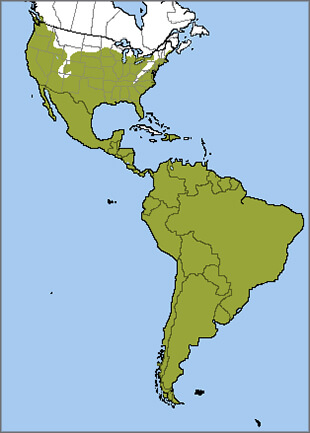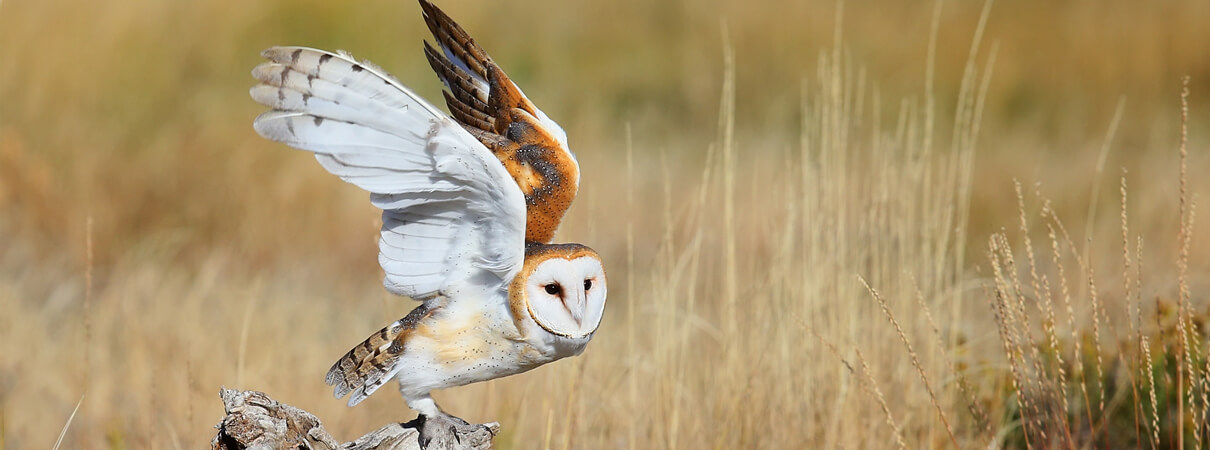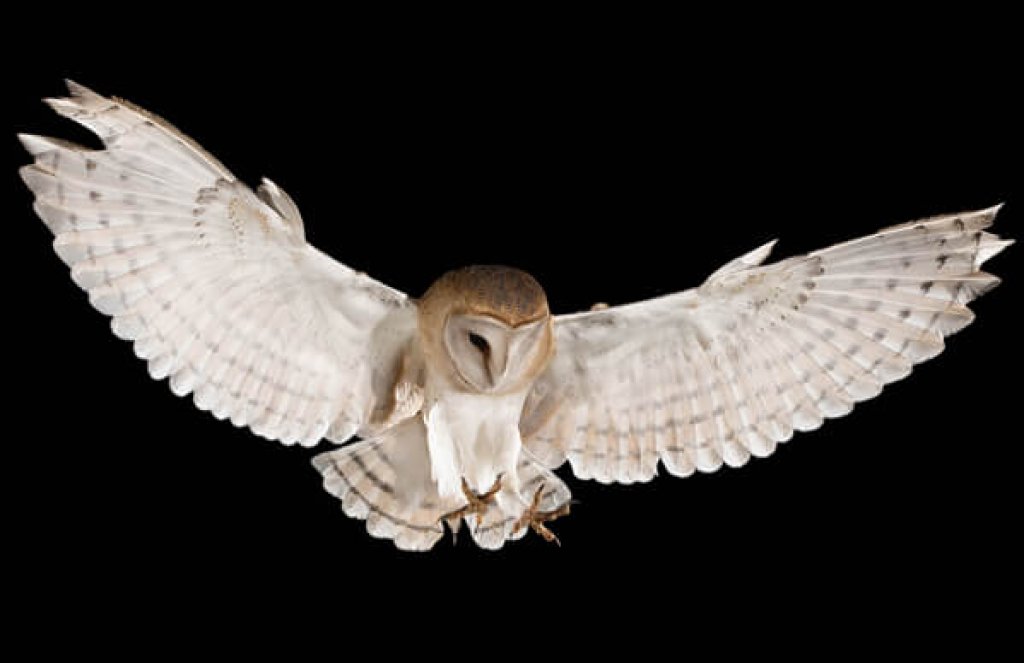
Barn Owl range in the Americas. Map by NatureServe
The Barn Owl's species name, Tyto alba, literally means "white owl." But behind this unremarkable name is an extraordinary predator with long legs and a distinctive heart-shaped face.
Barn Owls are found around the world and tend to nest close to human habitations, giving rise to a variety of folk names. Some of these names — like church owl and straw owl — reflect where the birds are often seen. Others, such as ghost owl and hobgoblin owl, signal the fear this raptor inspires. No mere hoot owl, the Barn Owl utters spine-tingling shrieks and hisses — sounds that are all the spookier when heard on a jet-black, chilly night. (Scroll down to hear the Barn Owl's voice.)
Widest-ranging Owl
The Barn Owl is a species of open areas, found around farms, marshes, grasslands, and other similar habitats. It has the widest distribution of any owl, occurring on every continent except Antarctica. At least 28 subspecies have been identified, mostly differing in size and color. Barn Owls are essentially nonmigratory, although young birds may move some distance in search of new breeding grounds.
Audio: The Barn Owl is more often heard than seen. This individual was recorded in Poland by Jarek Matusiak, XC415447. Accessible at www.xeno-canto.org/415447.
Unlike the Short-eared Owl, Barn Owls rarely appear at dusk or dawn. Its nocturnal habits make estimating Barn Owl populations notoriously difficult. People spot one of these owls only rarely, and when they do, it's usually for a split-second — a glimpse of a ghostly white image passing overhead, then disappearing into darkness.
When spotted, the striking white face and underparts usually flash into view, giving the impression of an all-white bird. In fact, Barn Owls have gold backs infused with gray patches. The pale gold, or tawny, coloration extends to the breast in females.
Sign up for ABC's eNews to learn how you can help protect birds
Hunting in the Dark
Barn Owls quarter low over the ground as they hunt, with a silent, moth-like flight that can make them resemble otherworldly apparitions. Like other owls, including Flammulated and Spotted Owls, they have asymmetric ear openings, an adaptation that allows the birds to capture prey with pinpoint accuracy in total darkness.
This species preys mainly on rodents, including rats, mice, and voles, and for this reason is welcomed by farmers who recognize its hunting prowess. Although the bulk of its diet is composed of small mammals, the Barn Owl will also catch other birds, amphibians, and large insects.
Secret Life of a Stealthy Bird
Mated Barn Owls remain together for life, and pairs tend to stay within a fixed territory. They nest in unlined cavities such as tree hollows and, on occasion, in riverbanks, cliffs, and haystacks. In areas close to human activity, these owls will raise their young in barns, silos, church steeples, and abandoned buildings. They will accept nest boxes and will sometimes even nest in duck blinds, mine shafts, and caves.
Clutch size depends on prey abundance, and in years of plenty, a female Barn Owl can lay as many as 12 eggs in a clutch, and nest twice a year.

Barn Owl by Don Mammoser, Shutterstock
Localized Troubles
Although listed on the IUCN Red List as a species of "Least Concern" and believed to have a steady worldwide population, Barn Owls have not fared well everywhere. Their low-flying hunting style puts them at risk when they cross or land on roads; many are struck and killed by collisions with automobiles. Power lines and other hanging lines also pose collision threats, as they do for many other large birds such as the Whooping Crane.
In addition to roads, large-scale, mechanized agriculture makes large swaths of land inhospitable to Barn Owls. Applications of pesticides, including rodenticides — along with the clearing of abandoned structures used as nest sites — also make modern farms much less Barn Owl friendly.
Friends of Owls
In Canada, the Barn Owl is listed as Endangered and is found in just a few southern outposts. In the northeastern and north-central United States, 10 states list the species as Endangered and 11 others as a Species of Special Concern. Awareness of Barn Owl declines in these areas, as well as in the United Kingdom, have sparked efforts to conserve remaining populations. These include installation of nest boxes and maintenance of habitat mosaics favoring the owl and its prey.
ABC works in various ways that benefit Barn Owls, including our BirdScapes approach to bird conservation, which aims to protect the continent's most important bird habitats through successful bird conservation that creates win-win results for both people and birds.
Donate to support ABC's conservation mission!



















































